Every year, millions of people in the U.S. receive the wrong medication, the wrong dose, or incorrect instructions - not because of malice, but because of simple, preventable mistakes. These aren’t rare outliers. They’re systemic problems that show up differently depending on where you get your medicine: in a bustling hospital or your local retail pharmacy.
How Often Do Medication Errors Happen?
In hospitals, errors are common. One major study found that nearly 1 in 5 doses given to patients contained some kind of mistake - whether it was the wrong drug, wrong time, or wrong amount. That’s not a glitch. That’s the norm in many facilities. Nurses, pharmacists, and doctors are juggling dozens of patients, shifting shifts, and fighting against fragmented systems. Even with all the technology, mistakes slip through. Now, compare that to your neighborhood pharmacy. At first glance, it seems safer. Studies show retail pharmacies make errors in only about 1.5% of prescriptions. That sounds low - until you realize how many prescriptions are filled each year. With over 3 billion prescriptions dispensed annually in the U.S., that 1.5% equals 45 million errors. That’s more than 40,000 errors per day. And here’s the scary part: in a hospital, someone else - a nurse, a pharmacist, a second check - might catch the mistake before it reaches you. In a retail pharmacy? You’re often the last line of defense.What Kind of Errors Happen Where?
In hospitals, the biggest problems come during administration. That’s when the nurse gives you the pill or IV. Common errors include:- Giving a drug at the wrong time (like doubling a dose because the schedule was misread)
- Wrong dose (10 mg instead of 1 mg)
- Wrong patient (mixing up names on wristbands or charts)
- Wrong medication (giving lisinopril instead of losartan - similar names, very different effects)
- Wrong dose (10 mg tablets instead of 5 mg)
- Wrong directions (‘take once daily’ written as ‘take twice daily’)
Why Are Hospital Errors More Frequent But Less Dangerous?
It sounds backwards, but it’s true. Hospitals have more errors - but also more safety nets. Think of it like a multi-layered filter:- A doctor writes the order.
- A pharmacist reviews it.
- A nurse checks the patient’s ID and the drug before giving it.
- Many hospitals now use barcode scanners - if the drug doesn’t match the patient’s chart, the system alarms.
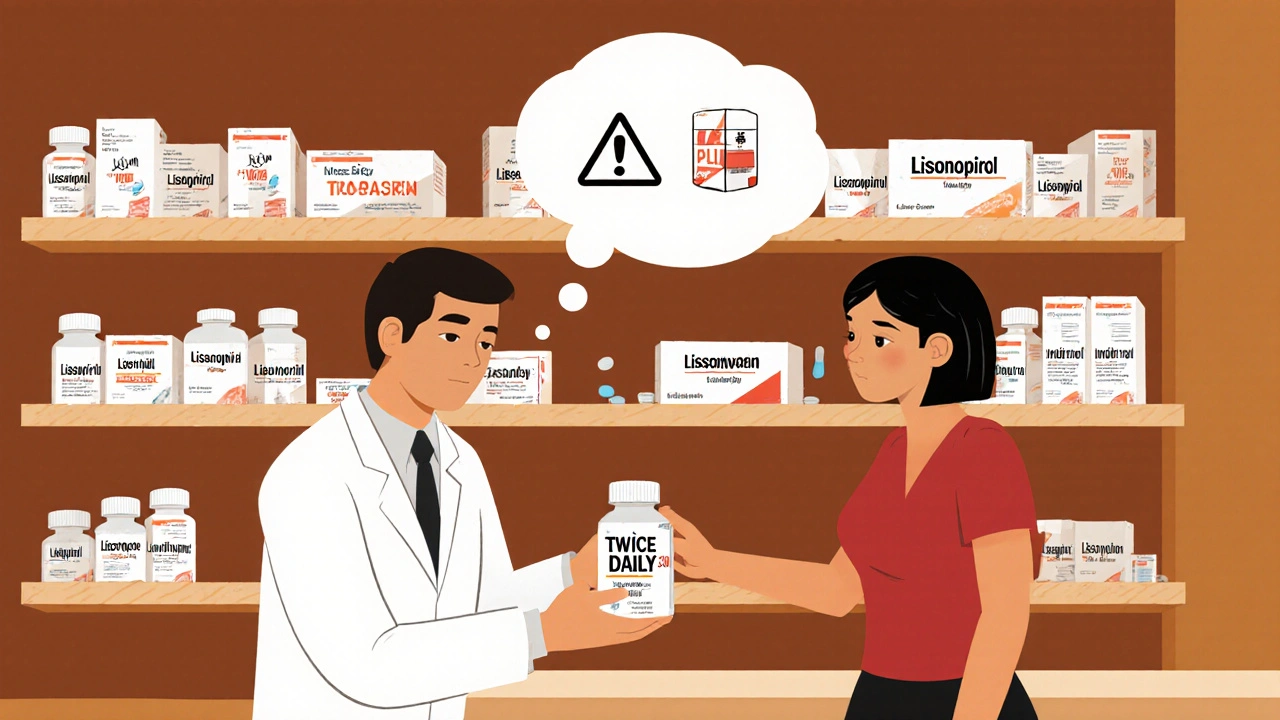
What Causes These Mistakes?
It’s not just ‘human error.’ That’s too simple. The real causes are hidden in how these systems are built. In retail pharmacies, the biggest culprits are:- High volume - a typical pharmacy fills 250 prescriptions a day
- Time pressure - you’re expected to fill a prescription in under 10 minutes
- Similar-looking drug names - metoprolol vs. metformin, amoxicillin vs. azithromycin
- Handwritten or unclear prescriptions - even though e-prescribing is common, some still come in as faxes or scribbles
- Automated systems that misread labels
- Staff shortages - nurses stretched too thin
- Fragmented records - the cardiologist’s notes aren’t synced with the pharmacy’s system
- Complex patients - someone on 12 medications is easy to mess up
- Shift changes - handoffs between teams lead to lost information
What Happens When Errors Go Uncaught?
In hospitals, about 1 in 100 medication errors leads to serious harm - and 1 in 1,000 causes death. That’s bad. But it’s not the whole story. In community pharmacies, 1 in 10,000 prescriptions results in a hospitalization. That sounds rare - but again, multiply that by 3 billion prescriptions. That’s 300,000 hospitalizations a year from pharmacy errors alone. And it’s not just about physical harm. One study found that patients who received the wrong medication from a pharmacy were three times more likely to stop taking their drugs altogether - out of fear, confusion, or distrust. That’s a hidden cost: people stopping life-saving meds because one mistake made them feel unsafe.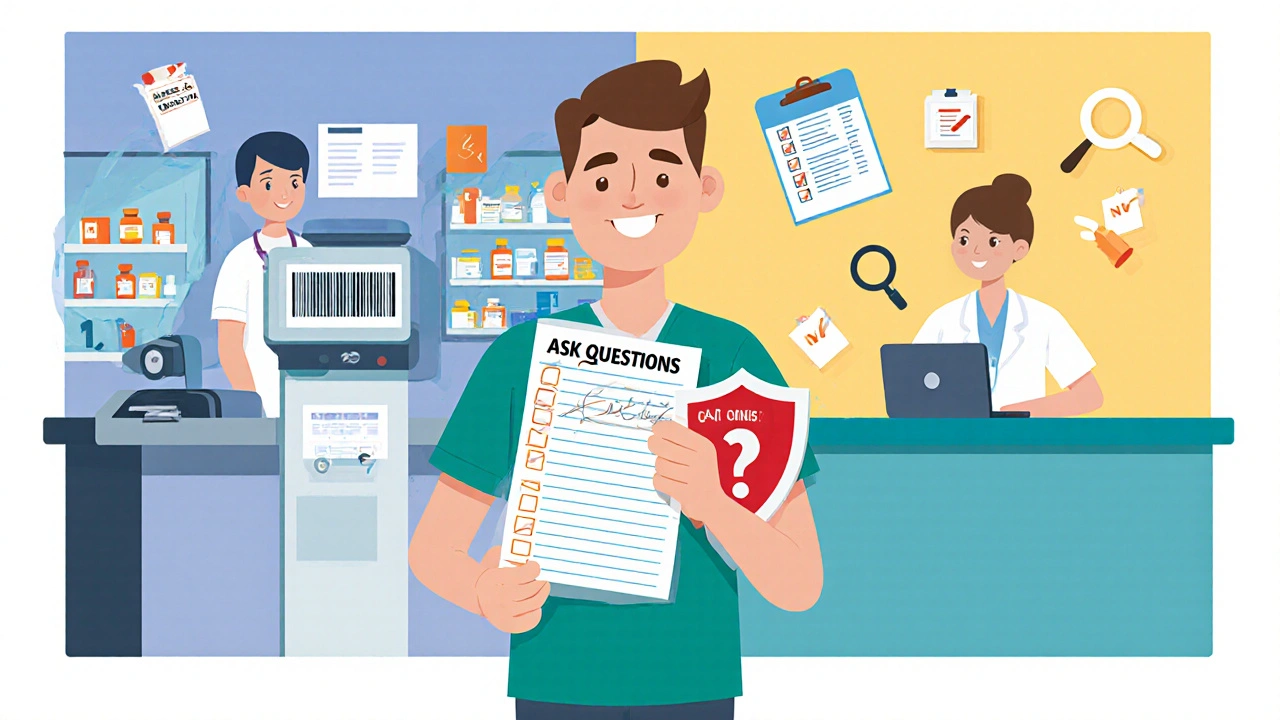
Are We Getting Better?
Yes - but unevenly. Hospitals have made big strides. Electronic prescribing, barcode scanning, automated dispensing cabinets, and real-time alerts have cut errors significantly. Mayo Clinic cut hospital medication errors by 52% after integrating their EHR and pharmacy systems. Retail pharmacies are catching up - slowly. CVS Health rolled out AI-powered verification in 2022 and saw a 37% drop in dispensing errors. Some states now require pharmacies to report errors to the board of pharmacy. California, for example, inspects error logs during routine visits. But here’s the gap: hospitals have formal reporting systems. Pharmacies? Most still don’t. A 2023 study found that fewer than 1 in 5 community pharmacies report errors - not because they’re careless, but because they don’t know how, or fear punishment.What Can You Do to Protect Yourself?
You’re not powerless. Here’s what actually works:- Ask questions. ‘Is this the same as my last prescription?’ ‘Why am I taking this?’ ‘What side effects should I watch for?’
- Check the label. Compare the name, dose, and instructions to what your doctor told you. If it doesn’t match, ask.
- Use one pharmacy. It helps them track your full medication list and spot conflicts.
- Keep a list. Write down every drug you take - including over-the-counter and supplements. Bring it to every appointment.
- Don’t assume. If a pill looks different, don’t just take it. Call the pharmacy. Ask if they changed the brand.
What’s Next for Medication Safety?
The future is tech - but it needs to be smart. The FDA is pushing for AI tools that can flag dangerous drug combinations in real time - not just in hospitals, but in retail systems too. Pilot programs in California and Minnesota are already showing a 63% drop in transcription errors using AI-assisted checks. There’s also a push for standardized error reporting across all pharmacy settings. Right now, hospitals report to one system. Pharmacies report to another - if they report at all. That makes it impossible to see the full picture. Experts agree: the goal isn’t to eliminate all errors. That’s impossible. The goal is to make them visible and correctable - no matter where you get your medicine.Which setting has more medication errors - hospitals or retail pharmacies?
Hospitals have a higher rate of medication errors - about 20% of doses contain some kind of mistake. Retail pharmacies have a lower rate - around 1.5% of prescriptions. But because hospitals fill 3 billion prescriptions a year, that 1.5% still adds up to 45 million errors in retail settings alone. The key difference is that hospitals have more checks in place to catch errors before they reach patients.
What are the most common types of pharmacy errors?
The most common errors in retail pharmacies are: giving the wrong medication (like mixing up similar-sounding drugs), wrong dosage (10 mg instead of 5 mg), and incorrect directions (‘twice daily’ instead of ‘twice weekly’). Transcription errors - where handwritten or unclear prescriptions are misread - are the leading cause.
Why are hospital errors more likely to be caught?
Hospitals have multiple safety layers: pharmacists review prescriptions, nurses check patient IDs and drug labels before giving medication, and many use barcode scanners that alert staff if something doesn’t match. Retail pharmacies usually rely on just one pharmacist to catch mistakes before handing the prescription to the patient - with no follow-up check.
Can medication errors from pharmacies lead to hospitalization?
Yes. Studies show that about 1 in 10,000 pharmacy dispensing errors leads to hospitalization. That’s rare per prescription - but with over 3 billion prescriptions filled yearly in the U.S., that equals roughly 300,000 hospitalizations annually. Errors involving blood thinners, insulin, or heart medications are especially dangerous.
What should I do if I think I received the wrong medication?
Don’t take it. Call your pharmacy immediately and ask them to verify the prescription with your doctor. Compare the label to what your doctor told you. If there’s a mismatch, ask for a new label. Keep the original bottle and receipt. If you’ve already taken the wrong dose and feel unwell, call your doctor or go to urgent care - don’t wait.
Are there technologies helping reduce these errors?
Yes. Hospitals use barcode scanning and electronic prescribing, which have cut errors by up to 86%. Retail pharmacies are now using AI-powered verification systems - CVS Health saw a 37% drop in errors after implementing one in 2022. The FDA is also funding pilot programs that use AI to flag dangerous drug combinations in real time, reducing transcription errors by up to 63% in early tests.

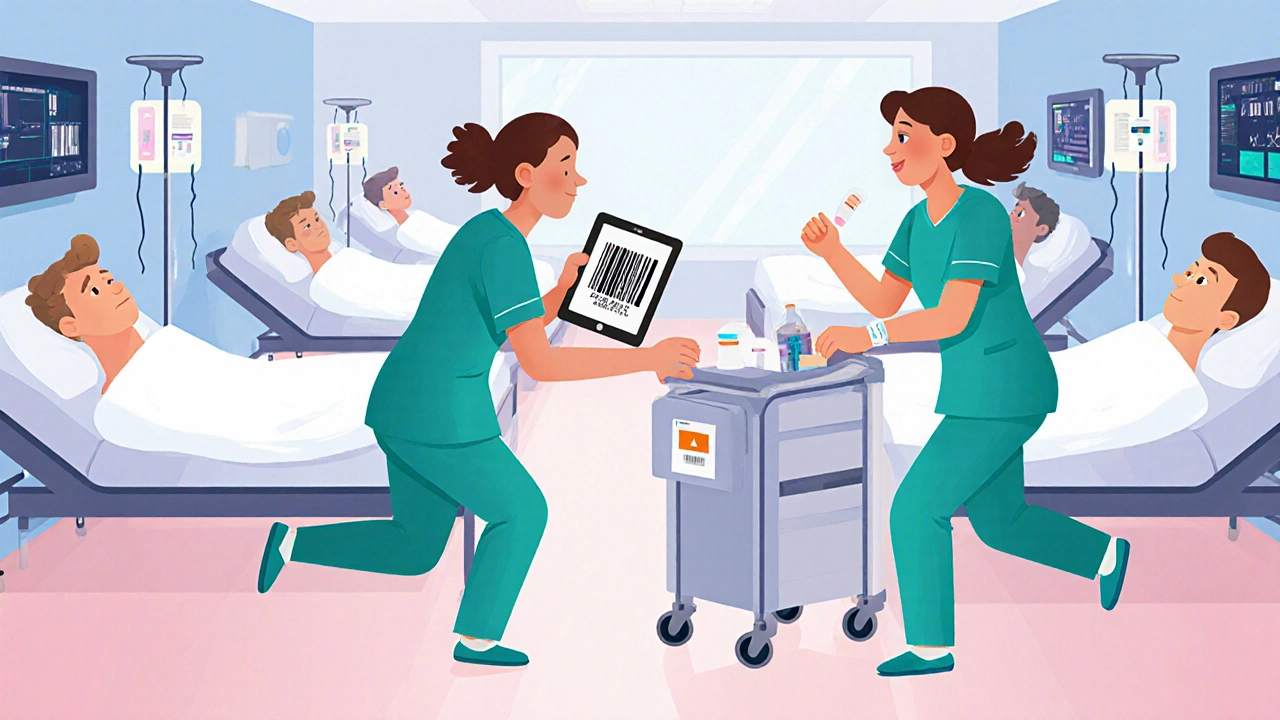
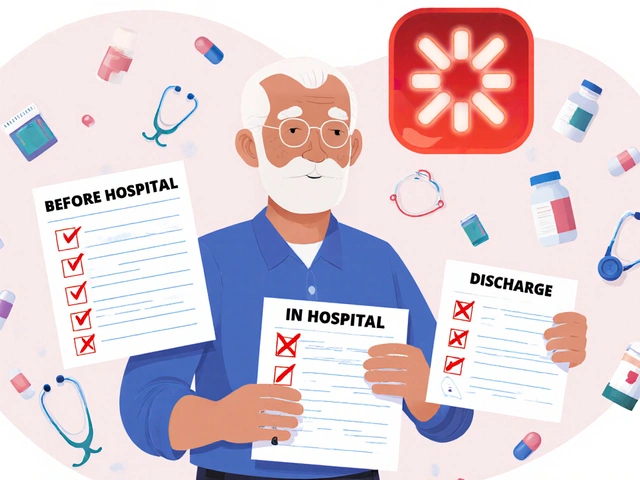
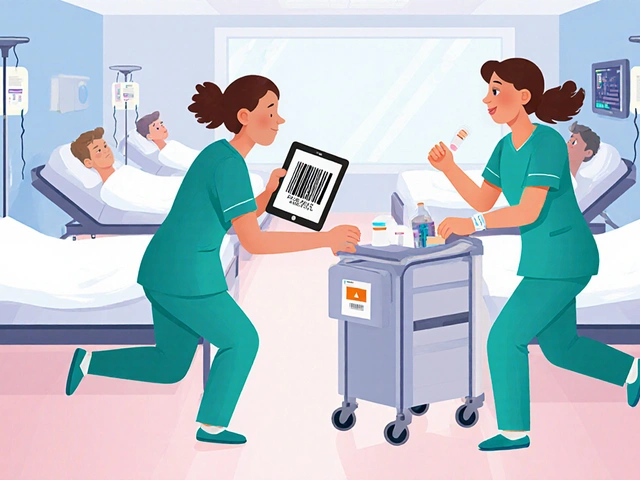
edgar popa
November 13, 2025 AT 06:32lol i got wrong meds once n thought i was gonna die. turned out it was just ibuprofen instead of tylenol. still freaked me out tho 😅
Eve Miller
November 14, 2025 AT 18:06It is not acceptable that patients are expected to act as quality control for a broken system. This is not a minor oversight-it is a systemic failure of accountability. Every pharmacy should be legally required to implement double-check protocols, and pharmacists should be held to the same standard as nurses in hospitals.
Chrisna Bronkhorst
November 15, 2025 AT 03:0720% error rate in hospitals? That's not a bug, it's the feature. You think they care? They're paid by the volume, not the outcome. Retail pharmacies are the last honest players left in healthcare. At least they don't bill you for the mistake.
Amie Wilde
November 16, 2025 AT 00:20i always check my pills before i leave the counter. no shame in it. if they get annoyed, they're the problem, not me.
Renee Ruth
November 16, 2025 AT 11:30They’re hiding the real numbers. You think 45 million errors is the full count? What about the ones that never get reported? The ones where people just… die quietly at home? This isn’t negligence-it’s a cover-up. The FDA knows. The pharmaceutical companies know. And they’re all laughing.
Samantha Wade
November 18, 2025 AT 04:13Thank you for this incredibly well-researched and compassionate breakdown. I work in public health, and I’ve seen too many patients lose trust in their medications because of preventable errors. The call for standardized reporting across all settings is not just reasonable-it’s urgent. We must advocate for policy change at every level.
David Barry
November 18, 2025 AT 05:45Let’s be real-hospitals are worse because they’re overloaded. But retail pharmacies? They’re profit machines. The guy behind the counter has 8 minutes per script, and if you ask a question, he rolls his eyes. It’s not incompetence. It’s economics. And we’re paying for it-with our lives.
Alyssa Lopez
November 19, 2025 AT 02:50USA is the only country where you get your life-saving meds from a guy who barely passed high school chemistry. We need nationalized pharmacies. Like Canada. Or Germany. Why are we letting corporations run our health? It’s pathetic.
Alex Ramos
November 19, 2025 AT 10:04Biggest tip? Always ask for the patient information leaflet. Even if you think you know the drug, read it. I’ve caught 3 errors myself just by checking the side effects list. 👍
Gary Hattis
November 20, 2025 AT 05:50As someone who grew up in a country where pharmacies are government-run and errors are public record, I can tell you-this is what happens when you treat medicine like a commodity. In my home country, if a pharmacist makes a mistake, they’re suspended. Here? They get a bonus for filling 300 scripts in 8 hours. The system is rigged.
Esperanza Decor
November 21, 2025 AT 16:47I used to think my grandma was just paranoid until she started asking for the original script every time. Now I do it too. I print out my prescriptions from the portal and compare them to the bottle. It takes 2 minutes. Could save your life. Don’t be lazy.
Deepa Lakshminarasimhan
November 22, 2025 AT 06:25They’re using AI to track us. That’s why they’re pushing these systems. The same AI that catches your wrong pill? It’s also logging your health data and selling it to insurers. You think they care if you live? No. They care if your data looks profitable. This isn’t safety-it’s surveillance.
Erica Cruz
November 24, 2025 AT 05:46Wow. Another one of those ‘you should be more careful’ articles. Real solution? Ban retail pharmacies. Let hospitals handle everything. Then we can finally fix the real problem: the fact that we let profit-driven corporations decide who lives and who dies.
Johnson Abraham
November 25, 2025 AT 00:43nah hospitals are worse. i got given morphine by accident once. they said ‘oops’. i said ‘oops’ back. we both laughed. now i just take my meds from the street. cheaper and safer.
Shante Ajadeen
November 26, 2025 AT 23:12Thank you for sharing this. I’ve been telling my mom for years to always check her labels, but she thinks it’s rude. You’re right-this isn’t about being rude. It’s about survival. I’m printing this out and giving it to her. You’re helping people.